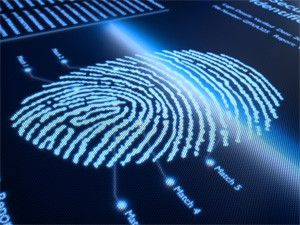
The Council for Scientific and Industrial Research (CSIR) has introduced new fingerprinting sensing technology, using high-speed and large-volume optical coherence tomography (OCT).
OCT is a medical imaging technique that uses light to capture micrometre-resolution, three-dimensional images from within optical scattering media.
In a statement, the CSIR says the OCT device, which is funded by the Department of Science and Technology, will contribute to law enforcement and forensics.
Ann Singh, CSIR laser scientist responsible for OCT, says the fingerprinting device uses light to capture, in 3D, the finest of details from biological tissue. "It is important to note that the light source of the OCT does not destroy DNA when extracting the latent fingerprints. The differentiating factor of our technology is that the CSIR team has enabled higher-resolution fingerprint acquisition by capturing more substrates of live or latent fingerprints (seen and unseen fingerprints left at crime scenes). The result is a significantly more accurate and tamper-proof fingerprint representation."
According to CSIR senior biometrics research engineer, Rethabile Khutlang, the contactless nature of OCT means it can acquire latent fingerprints without destroying potential useful DNA material for forensics. It can detect sweat glands and it can detect if the subject that is being scanned is dead or alive.
Crime scene personnel will be able to use the OCT device to scan areas and lift fingerprints without the use of dusting and the risk of contamination, the statement notes.
The contactless nature of OCT means it can acquire latent fingerprints without destroying potential useful DNA material for forensics.
CSIR senior biometrics research engineer, Rethabile Khutlang
CSIR biometrics and image processing researcher Luke Darlow says another benefit of the device is its ability to scan fingertips without the need for contact between the scanner and the fingertip.
"This solves the problem of elastic distortion in conventional 'slap' scan fingerprint acquisition devices, which is caused by the pressure of a finger on a surface. Since it is contactless, it is also hygienic and residual fingerprints are not left on a scanner surface. In addition, unlike current technology, it is not influenced by moisture conditions or skin damage.
The fingerprinting device uses light to capture, in 3D, the finest of details from biological tissue.
Ann Singh, CSIR laser scientist responsible for OCT
"The CSIR OCT system is capable of acquiring both external and internal fingerprints. Combining these allows for a hybrid fingerprint that results in better biometric performance. The acquisition of such detailed fingerprints means that fake prints can be easily detected," he notes.
The CSIR's OCT technology is not limited to biometrics. It can also be used in fields such as dermatology, ophthalmology and polymer characterisation, the statement adds.
Share